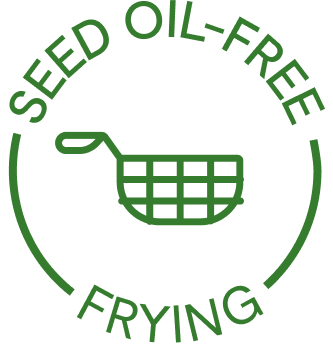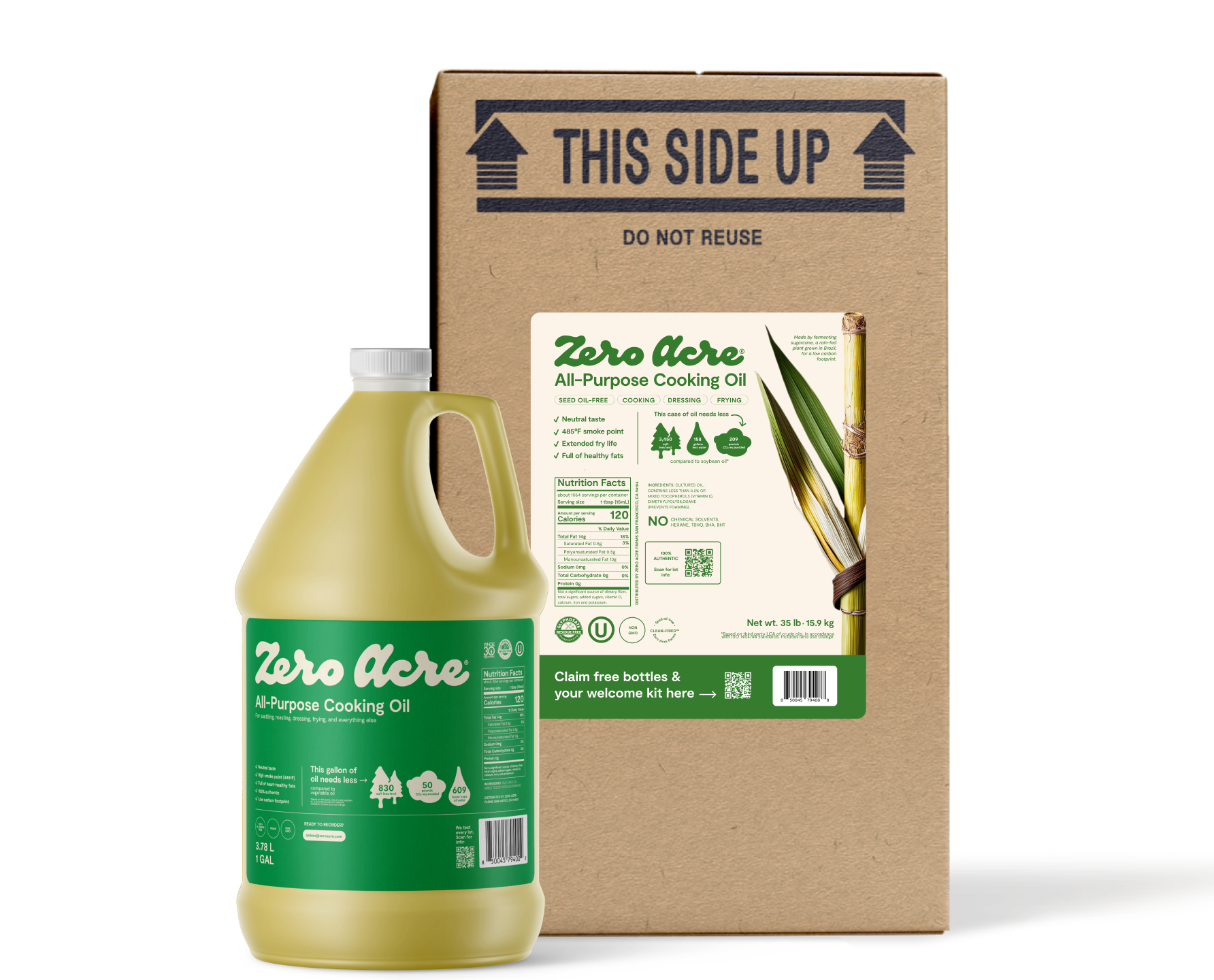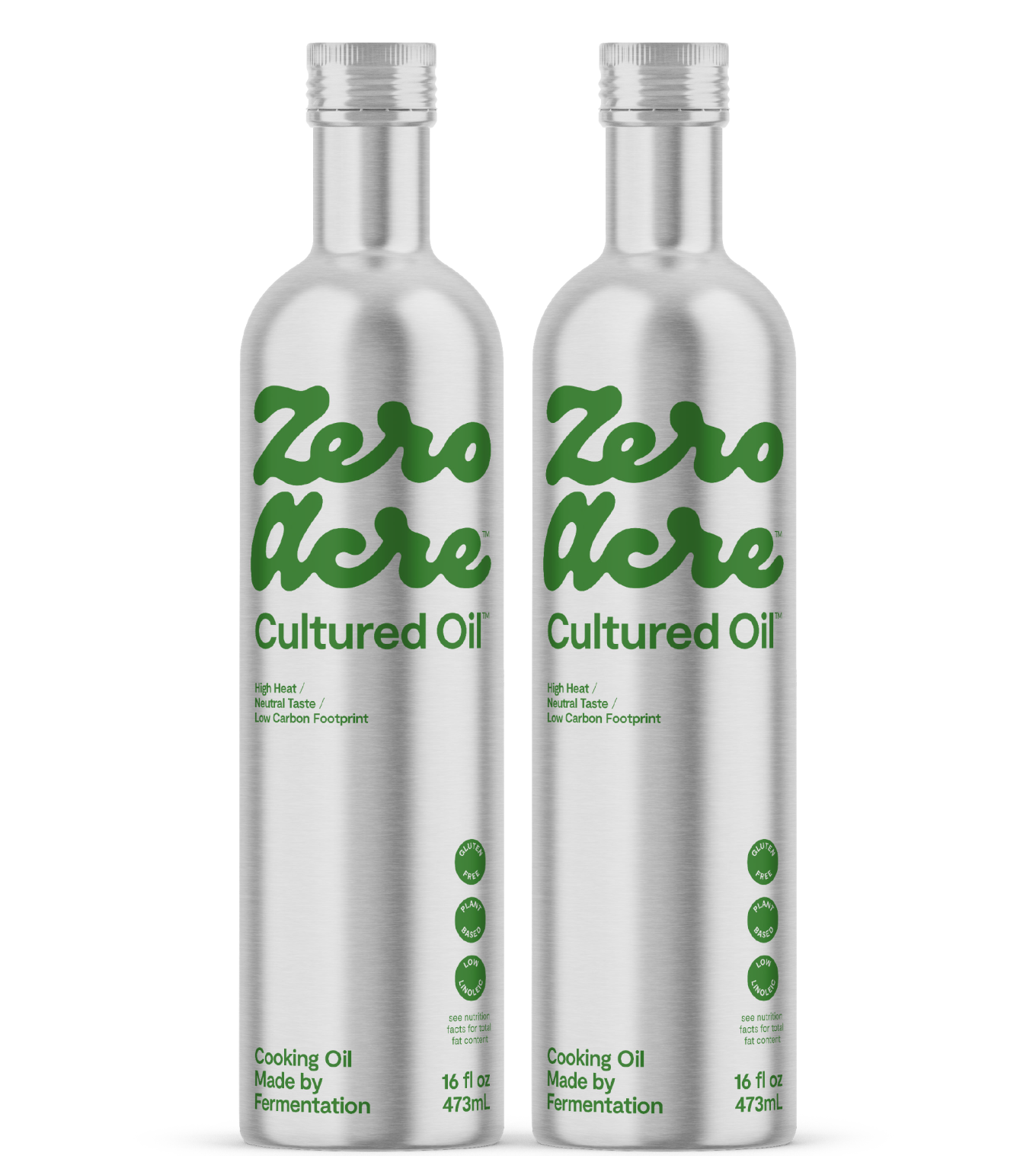WRITTEN BY: Corey Nelson
Article at a Glance
Chronic pain is on the rise, with over a quarter of people in the U.S. suffering from pain lasting longer than 3 months.
Omega-6 fats are an overlooked contributor to inflammation, pain signaling, and pain sensitivity.
The average person today eats 10-20 times more omega-6 fats than people did in the past, which could explain rising rates of chronic pain as well as obesity, inflammation, heart disease, and cancer.
Reducing inflammatory omega-6 intake by avoiding seed oils may be a promising option to prevent chronic pain.
Introduction
Chronic pain — pain that lasts more than three months and usually involves increased pain sensitivity — is an expensive problem, physically, emotionally, and financially. And it's on the rise [*,*].
Over a quarter of people in the United States suffer from chronic pain, which is extremely difficult to treat [*]. Conventional over-the-counter treatment options aren't always effective, while prescription opioids are intensely habit-forming and may make pain worse over time.
One potentially overlooked contributor to chronic pain is the high levels of omega-6 fats in most diets today. Excess intake of omega-6 fat, primarily linoleic acid, can heighten pain signaling and pain sensitivity, and the average person today is eating 10-20 times more linoleic acid than people did in the past [*,*,*,*].
In this article, we'll dive deep into the causes of chronic pain, how inflammation can trigger or worsen chronic pain, the link between inflammation and seed oils, and research suggesting that reducing your seed oil intake could be a helpful approach to preventing chronic pain.
What Is Chronic Pain (And What Causes It)?
Chronic pain is any pain that lasts longer than three months [*]. It's usually challenging to treat with safe medications, leading some patients to depend on habit-forming opioid drugs. There are many causes, and most chronic pain patients suffer from more than one type of pain [*].
Physicians categorize chronic pain into the following common types [*,*]:
Musculoskeletal (including back pain and myofascial muscular pain)
Inflammatory (caused by inflammation, autoimmune disorders, or infection)
Nociceptive (pain caused by injuries to tissues, such as burns, bruises, or sprains)
Neuropathic (resulting from nerve damage or dysfunction)
Psychogenic (originating from stress or other psychological factors)
Idiopathic (chronic pain without a known cause)
Constant pain reduces quality of life and affects every aspect of patients' lives. Over two-thirds of people with chronic pain suffer from issues like depression or anxiety, and chronic pain patients have an increased risk of suicide [*].
There's no single, universal root cause of chronic pain, even within the well-understood types of chronic pain. And pain persists over time in some cases, but not others [*]. Some patients are simply unable to experience relief from pain.
All pain, not just chronic pain, is complex. The perception of pain usually begins in tissues, with a process known as nociception. Nociception involves neurotransmitters and signaling compounds that are released by cells and then communicate with neurons [*]. The neurons and circulating compounds transmit electrical and chemical signals to the brain, where a large network of regions including the thalamus, amygdala, hypothalamus, basal ganglia, and areas of the cerebral cortex is involved in perceiving pain [*].
To make matters more complicated, in some types of chronic pain, the brain perceives pain — including severe pain — without nociception occurring at the tissue level [*]. These types of pain appear to be caused by dysfunction at the level of the nervous system [*].
Although scientists now have a fairly good understanding of pain mechanisms, this unfortunately hasn't led to any significant breakthroughs in chronic pain treatment.
Most non-habit-forming drugs like acetaminophen (Tylenol), aspirin, and NSAIDs simply aren't very effective and can have serious side effects, while opioids are expensive, carry a strong risk of addiction, and can make pain worse over time for some patients [*,*,*].
A shortage in options for treating pain has led researchers to investigate off-label uses for various anti-epileptic drugs and antidepressants, and to combine pain medications with muscle relaxers or experimental drugs, but most of these treatment options are habit-forming and also come with significant adverse effects [*].
If you don't already have chronic pain, you can keep these risk factors in mind. From a study of chronic lower back pain (one of the most common manifestations of chronic pain) [*]:
Obesity increased the risk by 52%
Smoking raised the risk by 56%
A diagnosis of depression or anxiety increased the risk by 66%
Receiving improper care within the first three weeks of developing lower back pain increased the risk by 39-116%.
Researchers have also investigated biomarkers of chronic pain — cells, molecules, or chemicals in tissue or blood that are higher, lower, or otherwise altered in people with chronic pain compared to those without.
Findings include:
A higher omega-6 to omega-3 ratio is associated with a 75% higher risk of temporomandibular disorder and 63% higher odds of lower back pain [*].
Adults living with chronic pain have a higher omega-6 to omega-3 ratio and higher levels of C-reactive protein (CRP), a marker of systemic inflammation [*].
There is an association of obesity and chronic pain with CRP levels in adolescents [*].
An association exists between chronic lower back pain and CRP levels, as well as levels of another inflammatory biomarker, TNF-alpha [*].
There is an association between chronic lower back pain and levels of CRP, TNF-alpha, and another inflammatory biomarker called IL-6 [*].
Fibromyalgia patients have significantly higher levels of CRP, TNF-alpha, IL-6, and IL-8 compared to controls [*].
As you can see, all of these biomarkers involve inflammation. In particular, they relate to low-grade systemic inflammation, a long-lasting inflammatory state that can disrupt immune function and lead to pain and other health problems [*].
Unlike acute inflammation, which is a healthy, short-lived biological response to illness or injury, chronic systemic inflammation is detrimental to your health [*]. Research demonstrates that systemic inflammation can increase pain signaling at the tissue level as well as sensitize your central nervous system to pain [*].
In the next section, we'll explore some of the likely reasons for systemic inflammation that leads to chronic pain, and what you can do to prevent it.
What Is the Connection Between Seed Oils, Inflammation, and Chronic Pain?
Seed oils like soybean, sunflower, and canola oil are high in linoleic acid, an inflammatory omega-6 fatty acid. By driving inflammation, seed oil intake may contribute to chronic pain.
Increasing intakes of this omega-6 fat are also correlated with obesity, inflammation, heart disease, cancer, and other chronic health problems.
Before the 20th century, people consumed a relatively low ratio of inflammatory omega-6 fats to anti-inflammatory omega-3 fats. Researchers estimate that the "evolutionary ratio" of these two types of fatty acids is around one-to-one, but the average modern intake is between 15-to-1 and 17-to-1, reflecting an extremely high intake of omega-6 fats [*].

As the production of industrial seed oils from soybean, sunflower, corn, and other sources increased, these inexpensive ingredients became incredibly popular as cooking oils and a low-cost calorie source in processed, pre-packaged foods. Today, most people consume between 6-10% of their calories from linoleic acid, reflecting 10-20% of daily calories coming from seed oils, a trend that's projected to increase further as time goes on [*,*,*].
Our bodies evolved to maintain a balance between inflammatory and anti-inflammatory cellular signaling. Eating too much omega-6 fats increases inflammation, damages cells, and reduces the effectiveness of anti-inflammatory processes in the body. In fact, eating seed oils high in omega-6 linoleic acid can even deplete tissues of essential omega-3 fats [*].
As we covered in the previous section, people living with various types of chronic pain ranging from lower back pain to fibromyalgia tend to have a higher omega-6 to omega-3 ratio, and higher levels of inflammatory chemicals like C-reactive protein (CRP), compared to people who don't have chronic pain [*,*,*,*,*,*].
Chronic inflammation appears to increase pain signaling and make your brain and central nervous system more sensitive to pain [*].
While this area of research is relatively new, it may be possible to prevent or reduce chronic pain by avoiding inflammatory omega-6 linoleic acid in foods. While seed oils are extremely common today, you can reduce your omega-6 intake by using alternative cooking oils and avoiding restaurants and pre-packaged foods that use seed oils as ingredients.
Zero Acre oil is an all-purpose cooking oil made by fermentation. Because it's sky-high in healthy fats and low in bad fats (like linoleic acid), it's an easy way to reduce your seed oil intake.
How Do Seed Oils Contribute to Chronic Pain?
Chronic pain is usually caused by multiple factors, but seed oils may contribute to chronic pain symptoms and could increase the risk of chronic pain. Seed oils like soybean and sunflower oil are high in omega-6 linoleic acid, an inflammatory fat that appears to increase pain signaling and pain sensitivity [*].
In a 2022 observational study, researchers examined 605 adults to learn more about the relationship between omega-6 intake and chronic pain [*].
The study volunteers provided answers to questions about orofacial pain, headache, lower back pain, irritable bowel syndrome, and other types of bodily pain, which were then converted into a scale of 0-100 (0 being the least pain, 100 being the most) [*]. Researchers correlated the pain data with blood levels of omega-6 and omega-3 fats, then controlled for other variables that could alter the results.
With every type of pain aside from abdominal pain, there was a strong correlation between omega-6 to omega-3 ratio, with each one-point increase in that ratio correlating to approximately a 5- to 8-point increase in pain score [*].
Again, for the sake of comparison, scientists estimate that the optimal evolutionary ratio of these two types of fatty acids is one-to-one, but the average modern person's intake is between 15-to-1 and 17-to-1, reflecting an extremely high intake of omega-6 fats [*].
In a 2016 experimental study performed on rats, researchers measured omega-6 and omega-3 fatty acids in various tissues, as well as signaling chemicals involved in pain that are derived from these fats, before and after increasing linoleic acid in some of the rats' diets for 15 weeks [*].
The rats received diets containing 0.4%, 5.2%, or 10.5% linoleic acid, corresponding to early human diets, typical intakes today, and high intakes today, respectively.
After the 15-week dietary intervention ended, the researchers discovered that the rats fed a diet high in omega-6 linoleic acid had higher levels of linoleic acid, as well as pain signaling chemicals derived from linoleic acid, in many different tissues [*].
What's more, the high-omega-6 diet also reduced the abundance of omega-3 fats and derivatives with anti-nociceptive (pain-reducing) properties in the rats' tissues [*].
According to the researchers, these findings "provide biochemical support for the hypothesis that the high linoleic acid content of modern industrialized diets may create a biochemical susceptibility to develop chronic pain" [*].
In a separate, 2012 study, researcher Christopher Ramsden and his colleagues tested the hypothesis that oxidized (molecularly damaged) linoleic acid byproducts could be responsible for chronic headaches, and that lowering linoleic acid intake might help reduce headache symptoms [*].
The scientists enlisted 67 volunteers who experience chronic daily headaches, then tested their blood levels of omega-6 linoleic acid as well as byproducts of linoleic acid that are linked to chronic pain, including 9-HODE and 13-HODE [*].
For 12 weeks, study participants reduced their linoleic acid intake from an average of 6.74% of daily calories down to 2.42% of daily calories [*].
The study found that consuming a diet lower linoleic acid significantly reduced linoleic acid byproducts as well as dramatically reduced several measures of chronic headaches and pain, and also increased quality of life compared to the control group [*].
Interestingly, 9-HODE and 13-HODE are also created during deep-frying with seed oils, which suggests eating restaurant-fried foods may contribute to chronic pain [*].
These results show that reducing linoleic acid in your diet may quickly reduce harmful, inflammatory compounds in your body that are linked with headaches and other types of chronic pain.
The Takeaway: Can Seed Oils Cause Chronic Pain?
Chronic pain is a complex problem with more than one cause. Along with injury, illness, and inflammation, factors like stress and an individual's psychological state can also come into play [*]. However, high seed oil consumption appears to be one plausible explanation for why chronic pain is on the rise [*].
Even as recently as 100 years ago, our ancestors ate a low ratio of omega-6 to omega-3 fats. Following the widespread introduction of seed oils like soybean, sunflower, corn, and canola oil, people began consuming more inflammatory omega-6 linoleic acid from these oils.
Consuming too much omega-6 appears to shift your body into an inflammatory state and increases tissue levels of linoleic acid and chemicals associated with pain signaling. It's also possible that chronic inflammation makes your brain and nervous system more sensitive to pain.
Altering this balance to potentially reduce the risk of chronic pain (as well as other conditions, including obesity, heart disease, and cancer) requires reducing your linoleic acid intake by eliminating seed oils (in the form of cooking oils, restaurant foods, and pre-packaged foods).
Unfortunately, it's not possible to consume enough wild-caught fish to lower your omega-6 to omega-3 ratio. Even though fish are an excellent source of omega-3 fats, eating sardines at every single meal still wouldn't provide enough omega-3s to offset the average person's linoleic acid intake [*]!
Zero Acre oil is an all-purpose cooking oil made by fermentation. Containing over 90% heart-healthy monounsaturated fats and less than 3% linoleic acid, it's one of the easiest, tastiest ways to reduce your inflammatory omega-6 intake.

Are Seed Oils Bad For Your Skin? What to Eat and What to Avoid
Omega-6 seed oils like soybean oil, sunflower oil, and corn oil are linked with skin aging and conditions like acne, eczema, psoriasis, and melanoma.

What Is Linoleic Acid? Facts, Health Effects, and How to Avoid It
Linoleic acid is an omega-6 fatty acid required for health in small amounts. Most people consume too much, which is linked with inflammation, obesity, and more.

Why Are Fried Foods Bad for You? (The Real Reason)
Restaurants reuse cooking oil hundreds of times, creating harmful compounds like acrylamides, toxic aldehydes, hydroxylinoleate, free radicals, and trans fats.





